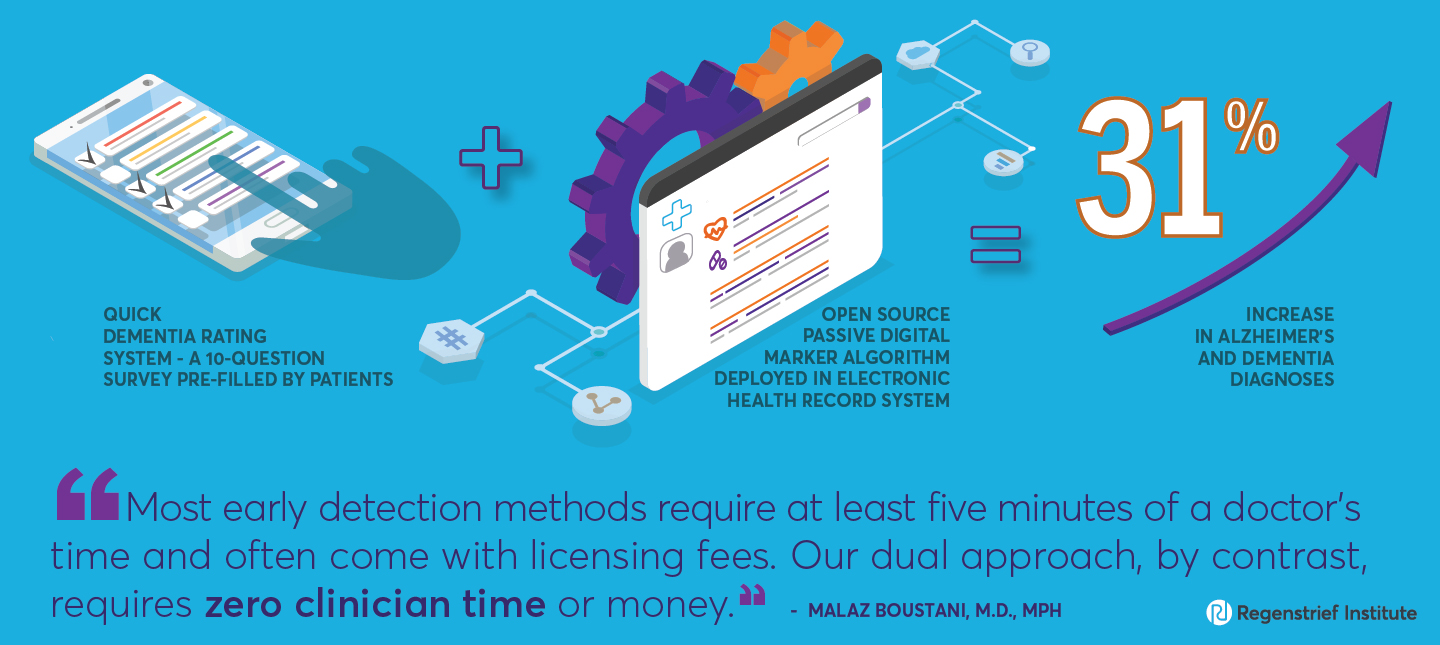Researchers at the Indiana University School of Medicine and Regenstrief Institute have developed a more accurate and cost-effective method to predict asthma diagnoses in children by using readily available electronic health records (EHRs). This scalable approach could enhance early detection rates and help reduce the risk of asthma disease progression in young patients.
The researchers enhanced an existing tool, the Pediatric Asthma Risk Score, by adapting it to use EHR data to create a new passive digital marker — calculated based on a combination of routinely collected medical history data — for childhood asthma risk. The study was led by Arthur Owora, PhD, MPH, associate professor of pediatrics at the IU School of Medicine and research scientist at Regenstrief Institute.
“Our hope is that using the childhood asthma passive digital marker in clinical practice will improve the early detection of asthma risk in high-risk children, allowing for earlier interventions that could improve asthma control and lessen the future risk of hospitalization,” Dr. Owora said. “Ultimately, we plan to study whether early interventions could help prevent the disease from progressing to more severe forms, which are often associated with higher health care needs and costs. This would be a win-win scenario for at-risk children, their parents, primary care physicians, and the health care system as a whole.”
For this study, Dr. Owora collaborated with IU School of Medicine’s Benjamin Gaston, M.D., vice chair of translational research and the Billie Lou Wood Professor of Pediatrics, and Malaz Boustani, M.D., the Richard M. Fairbanks Professor of Aging Research, director of the Center for Health Innovation and Implementation Science and a research scientist at Regenstrief Institute.
“This passive digital marker is very scalable because it requires zero additional minutes from the clinical team by using the already captured data in the electronic health record,” Dr. Boustani said. “Scalable innovations like this in pediatrics have unbelievable potential public health impact for the health of the future generation of Americans.”
The findings revealed the new passive digital marker was more accurate than the traditional Pediatric Asthma Risk Score in predicting which children would later be diagnosed with asthma between the ages of 4 and 11. The researchers analyzed records of nearly 70,000 children born between 2010 and 2017 using Indiana Network for Patient Care databases.
Dr. Owora noted that while clinicians are already effective at assessing asthma risk, the process can be enhanced by efficiently summarizing a patient’s medical history to generate earlier, more accurate predictions when and where patients receive medical care. Delays in diagnosis can postpone important preventive measures, such as avoidance of asthma triggers like allergens, initiation of asthma controller medications, provision of asthma education or other personalized interventions and treatments.
Next, the research team plans to use a randomized clinical trial to evaluate the effectiveness of the childhood asthma passive digital marker in increasing the rate of early childhood asthma diagnoses among high-risk children. The trial will also examine whether the passive digital marker reduces the time between when a child meets criteria for an asthma diagnosis and when a formal asthma diagnosis is made.
“If the trial is successful, we will explore scaling up the implementation to ensure the benefits of early detection are realized at the state and hopefully at the national level as well,” Dr. Owora said.
The article, “External validation and update of the pediatric asthma risk score as a passive digital marker for childhood asthma using integrated electronic health records” is published in the journal, eClinicalMedicine. This study was supported by the National Institutes of Health.
Authors and affiliations as listed in the publication
Arthur Hamie Oworaa,b,c; Bowen Jianga,c; Yash Shaha,c; Benjamin Gastonc; Malaz Boustanid,e.
aDivision of Pediatric Pulmonology, Allergy/Immunology and Sleep Medicine, Department of Pediatrics, Translational Informatics, Biostatistics and Epidemiology Lab, Indiana University School of Medicine, Indiana, USA
bCenter for Biomedical Informatics, Regenstrief Institute, Indiana, USA
cDivision of Pediatric Pulmonology, Allergy/Immunology and Sleep Medicine, Department of Pediatrics, Indiana University School of Medicine, Indiana, USA
dRegenstrief Institute, Inc, Indiana, USA
eCenter for Health Innovation and Implementation Science, Indiana University School of Medicine, Indiana, USA
Original content for this press release was developed by the IU School of Medicine and can be found here.
About the Indiana University School of Medicine
The IU School of Medicine is the largest medical school in the U.S. and is annually ranked among the top medical schools in the nation by U.S. News & World Report. The school offers high-quality medical education, access to leading medical research and rich campus life in nine Indiana cities, including rural and urban locations consistently recognized for livability. According to the Blue Ridge Institute for Medical Research, the IU School of Medicine ranks No. 13 in 2024 National Institutes of Health funding among all public medical schools in the country.
About Regenstrief Institute
Regenstrief Institute is a world-renowned medical research organization founded in 1969 by Indiana entrepreneur and businessman Sam Regenstrief. A close partner to Indiana University, particularly the IU School of Medicine, Regenstrief’s research scientists are leaders in their disciplines, focusing on a long list of methods and topics important to local communities, the state and nation to advance healthcare delivery and outcomes. These include the aging brain, cancer and cancer screening, treatment of pain and other symptoms, identification of modifiable dementia risk factors, the application of health information technology to improve healthcare delivery, stroke and post-stroke care, optimization of care of nursing home residents, telecare, population health, medication safety, palliative care, caregiving, patient-physician communication and healthcare workforce development.










